- Home
- Clive Cussler
The Mayan Secrets Page 17
The Mayan Secrets Read online
Page 17
He completed his packing by throwing in some equipment: a shooter’s 60-power spotting scope, with a small tripod, and his personal weapons and some ammunition. He knew that Ruiz would come prepared. Ruiz habitually carried a pistol, even in Los Angeles, and had a boot knife, because that was the way he had come up. He had been a collector for a street gang as a teenager and then he became a cop for a while. It was a strange twist that as he’d come into middle age, he had begun to look like a Mexican politician or a judge. His appearance made him a good man for the job. He wasn’t automatically a suspect. He was also fluent in Spanish and that helped many times.
When Russell took this kind of job, he liked to have more time to prepare, but he would manage. He threw in his passport, five thousand dollars in cash, and a laptop computer. He closed his suitcase and went out to his car. He locked the house, then stopped for a second to be sure he’d forgotten nothing essential. Then he got into the car and drove toward Ruiz’s house, thinking about the job.
Sarah Allersby was on the verge of taking a big step toward learning who she was. That was the way he thought about it. He had worked for many bosses over the years and he had seen the way they learned. They started out with the proposition that they were better than other people and therefore had a responsibility to lead them. In exchange for that brave work, they gained most of the available wealth. Once they had the wealth, it was theirs, and they had a right to protect it and the privileges it bought. If that was true, then they also had a right to get more in the same way—or, really, in any way, including taking it. They got involved in businesses that killed people indirectly, where they didn’t have to see it. Diego San Martin, the drug lord who paid Sarah for the security of being able to raise marijuana on the land of a rich, respectable woman, had killed people. He was probably killing people all the time. Little by little, she was getting used to the idea that it didn’t matter. Russell had met Sarah’s father after Mr. Allersby had already reached that point. Russell’s first job for the older Allersby was to kill a man—a business rival who was preparing to file a patent infringement suit.
Russell knew, although Sarah hadn’t taken the step yet, that she was very nearly ready to buy the deaths of these Fargo people. That could happen at any time. It occurred to him that he had better stop at the office and pick up a couple of additional items. He drove to the back of the building and went up the exterior stairway, unlocked the door and turned on the light.
He went to a locked filing cabinet and opened it. He took a pair of razor-sharp ceramic knives, which wouldn’t set off metal detectors, and a diabetic’s travel kit, with needles and insulin bottles, in a leather case. The insulin in the bottles had been replaced with Anectine, a drug that surgeons used to stop the heart. They would restart it with Adrenaline, but, of course, restarting hearts wasn’t the business Russell was in so he had none of that. He opened the leather case and looked at the prescription date. It was the new one, only a month old. He took the kit with him and put it in his suitcase.
As Russell drove on toward Ruiz’s house, he felt better. When Sarah got around to recognizing what she really wanted done, Russell and Ruiz would be able to take care of it without uncertainty or delay. Upper-class customers like her hated uncertainty, and they hated waiting. They wanted to be able to signify their will and have it carried out right away, like gods.
SAN DIEGO TO SPAIN
Remi and Sam boarded their plane out of San Diego two days later. The flight took them to New York JFK, where they had to wait for their next plane to leave for Madrid in the late evening. The flight brought them into Madrid-Barajas Airport early in the morning.
When they had been hiking in Guatemala, they had tried to look like ecotourists or history buffs so they’d brought only well-worn tropical clothes, which they had rolled up and carried in their backpacks. This time, they were traveling as a pair of rich American tourists who couldn’t possibly be doing anything serious.
They had bought new matching luggage that looked as expensive as it was. Each piece had an embossed leather tag sewn on that said “Fargo,” and one was packed with the Brioni suits Sam had bought a few months ago in Rome, the other with some of Remi’s fashionable dresses, shoes, and jewelry. Remi brought a Fendi perforated-leather sleeveless dress with a nude silk lining she’d been saving, a Dolce & Gabbana floral-print dress, and a short J. Mendel silk crew-neck dress that had made Sam watch her walk all the way across the room when she’d tried it on.
Also inside their bags were small digital spy cameras, two embedded in watches and two in clear eyeglasses. They knew that if the copy of the codex existed, they would not be able to remove it from the building, and getting permission to photograph it would be at least difficult and maybe impossible. Even worse, just asking permission would announce to the rest of the world that the copy existed and would soon reveal what it contained.
They flew first class on the transatlantic flight, and, when they arrived, they took a taxi to the Chamartin station and boarded the streamlined Alta Velocidad Española bullet train to Valladolid. The train took only an hour and ten minutes to cover a hundred thirty miles, including passing through a seventeen-mile tunnel. Selma had made a reservation for them at the Zenit Imperial Hotel, a fifteenth-century palace next to the Town Hall and the Plaza Mayor. She also downloaded a digital version of a guidebook to Valladolid on Remi’s iPad.
Sam and Remi spent their first day exploring the city, validating their appearance as rich tourists who had time to spare. The modern city of Valladolid is a manufacturing and communications center and a major grain market, but they entertained themselves by seeking out the old city, where the remnants of the Middle Ages still stood.
Remi read from a guidebook as they walked from place to place. “The Spanish conquered the city from the Moors in the tenth century. Unfortunately, they forgot to ask the Moors what Valladolid meant, so we don’t know.”
“Thanks for that,” said Sam. “Anything else on the list of missing facts?”
“Scads. But we do know Valladolid was the chief residence of the kings of Castile. Ferdinand and Isabella were married here and Columbus died here. Cervantes wrote part of Don Quixote here.”
“I’m impressed,” said Sam. “And I’m serious.”
Their last stop was the Colegio de San Gregorio, where Las Casas lived for several years after he returned from the New World. They walked to the front of the great stone building as Remi checked her guidebook. “The portal to the chapel—the building in front of us—was built by Alonso de Burgos, confessor to Queen Isabella, in 1488. The chapel itself was finished in 1490.” She looked down at the stones of the pavement. “So, right now, we’re standing where Columbus, Queen Isabella, and Ferdinand probably stood.”
“Not to mention Bartolomé de Las Casas,” Sam said quietly. “It’s really an amazing piece of architecture.”
“Las Casas came here to live in 1551. He rented a cell in the college. During this period, he was very influential at Emperor Charles V’s court. He died in 1566, in Madrid, but left his extensive library to the college. Our next mission is to see if we can find it.”
On the other side of the street there was a gaggle of German tourists being led by a tall blond woman who was lecturing them on the sights. In the center of the group were the two men who had followed Sam and Remi to Spain, Russell and Ruiz. When Sam and Remi stepped into the entrance, Russell and Ruiz separated themselves from the German tourists and moved down the street to watch the chapel from a distance.
Sam and Remi walked through the entrance and into the chapel. It was a dream of white stone, carved and polished five hundred years ago and still the same in the echoing silence as though time had only passed by outside, not in here.
“The upper tier must be where Las Casas rented his room,” said Sam, “and where he wrote his last few books.”
They walked through the college while Remi scanned the guidebook
. “Life wasn’t all pretty here,” she said. “In 1559, the Inquisition burned twenty-seven people at the stake in Valladolid. And, at one point, an enemy denounced Las Casas to the Inquisitors too, but the accusation didn’t go anywhere. When Las Casas signed over the rights to his History of the Indies to the college, he added the condition that it not be published until forty years passed. He said that if God destroyed Spain for its sins, he wanted people in the future to know what exactly they had done wrong—they had treated the Indians with such cruelty.”
“Let’s keep looking. If we find his library, maybe we can make an appointment to get in and take a look at it tomorrow,” said Sam. They continued to search and eventually found their way to a museum of Spanish sculpture. They approached the man at the desk near the entrance. “Here goes,” Remi whispered.
Remi said to him in Spanish, “Sir, do you know where we should go to see the library that Bishop Bartolomé de Las Casas donated to the College of San Gregorio?”
“Yes, I do,” replied the man. “First, you must know that it’s all part of the University of Valladolid.”
“I suppose the books had to be moved to a modern university.”
The man smiled. “The university was founded in 1346. But, yes, it’s modern. It’s an active institution, with thirty-one thousand students. The College of San Gregorio is a part of it but serves mainly as a museum of art and architecture now. The monks are gone. I believe what you’re looking for is quite close by in the History Library.”
“How do we find the History Library?”
“Go down the Calle Gondomar to the main university. Outside is the patio. There are three levels set on octagonal pillars. On the right side is the chapel and on the left is a semicircular porch. Go left. The first level houses the History Library.”
As they walked to the library, Sam noticed that two men were on the same course, walking far behind them on Calle Gondomar. He wondered for a moment if they could be following him and Remi. He and Remi had, after all, put Sarah Allersby on notice that they weren’t going to let her rob them and forget it. But they were a long way from Guatemala City, and they’d just arrived in Valladolid. Could these men have followed them here already? They would have had to be watching them in San Diego practically from the time they’d come home from Guatemala, then caught the same plane or the one after it.
They reached the History Library, and Remi asked in Spanish whether they could see the collection of books that Bartolomé de Las Casas had left the College of San Gregorio. They were pleasantly surprised to learn that they could sign in as visiting scholars, and a librarian would admit them, without too many intimidating formalities. They only had to prove their identities and leave Remi’s purse and their passports at the desk. When they entered a large reading room, there were already a few graduate students reading old books at tables.
A second history librarian showed them to a rare book room, gave them gloves, and allowed them to examine the volumes in the Las Casas collection for about three hours, going from one volume to the next. All of the volumes were bound or rebound in old leather. Some were hand-copied Latin or Spanish in archaic handwriting, some were incunabula—works printed before 1500—a few in medieval Gothic script with hand-painted illumination. Most were religious works in Latin. There were commentaries on the Bible, collected sermons, multiple copies of breviaries. There was a copy of the Corpus Aristotelicum. There were also Spanish volumes written or copied in a hand that was clearly the same as the writing on the letter that had been hidden in the Mayan codex. Whenever they saw one, it excited them, but none was what they had come so far to find. The treasure they searched for would consist of Mayan pictures and glyphs, not Spanish text.
At the end of the day, just before it was time for visitors to leave the library, the desk librarian made an announcement that readers should return books. The Fargos gave theirs up immediately, went to the desk to retrieve Remi’s bag, and left. As they emerged onto the patio outside the building, Remi whispered, “Have you seen those two men before?”
Sam stopped, apparently to look around him at the medieval Spanish architecture but took a moment to find the men she meant. They were already walking off in another direction. “I saw a couple of men earlier on the Calle Gondomar, but I can’t tell if those are the same ones. What did they do?”
“I could feel them staring at us.”
Sam smiled. “You could feel them staring at you, more likely. You should be used to that.”
That evening, Sam and Remi began their exploration of the city’s nightlife with the Plaza Mayor, right outside their hotel. They sampled the coffee in the Continental, then went for pinchos, the favorite local iteration of tapas, at Restaurante Los Zagales. They were made of morcilla sausages, red onion, and pork rind, all wrapped into a roll.
Each day, Sam and Remi walked from the Zenit Imperial Hotel and returned to the History Library to examine the next group of five-hundred-year-old books.
After the library closed that afternoon, Sam and Remi returned to their hotel for a nap, then got up at ten to begin their evening of exploring. That night they tried Taberna Pradera, known for the fresh calamari cracker in its own ink. The following night, they tried Fortuna 25, which served a free-range chicken stuffed with mussels and algae. Another night, it was Taberna del Zurdo. They drank Rueda, Ribera del Duero, and other fine Spanish red wines, moving from place to place as though each evening were a celebration.
During the days, they pressed on with the Las Casas collection, making their inventory and, in the process, getting to know a little about the man who had owned these books. Most of them were books like the Rule of Saint Benedict, the work that set the tone for the monastic life, the Moralium Libri of Pope Gregory I, and others that were appropriate for a monk in the sixteenth century. They found several copies of the works of Thomas Aquinas, and a handwritten volume of commentary on them.
It was on their eighth day in the library that Sam and Remi ran into another trove of volumes in Spanish that had been written on vellum in the hand of Bartolomé de Las Casas. They were tall, in a ledger format, all in a sequence. The first were his attempts, written in Mexico, at collecting a K’iche’ language glossary. There were also observations on the other languages of the Mayans, written in 1536. The next volume was a journal recording the daily activities that had gone on at the Dominican missions he had founded at Rabinal, Sacapulas, and Cobán. Records of expenditures and harvests were interspersed with various notes on the building of churches in the region and the names of Mayan converts who had come to live outside Rabinal. Remi read that he was opposed to mass conversions of Indians. He believed in teaching each prospective Catholic and then letting him or her make an informed decision, so the inventory of converts made sense.
The date of the volume after that was October 1536, and it extended through April 1537. It began with the now-familiar columns of figures and notations on vellum that had been divided into columns by straight lines. It went on for many pages, and then, at a certain point, the quality of the vellum changed.
The first pages were routine quality, made from the skin of an animal, treated by removing the hair, wetting, stretching, and drying the skin until it was a thin white surface for writing on both sides. But sewn in after fifty or sixty sheets was a long section of pages of a different quality vellum. These had been rubbed so thoroughly with pumice stone or a similar abrasive to make a perfectly smooth writing surface that they were translucent.
Sam turned the first page in this section and saw a startling sight. It was an exact copy of the letter from Las Casas that had been hidden in the binding of the Mayan codex. He touched Remi’s arm, and they both stared at the familiar Spanish words:
“A todos mis compatriotas, benediciones. Este libro y otros de los maya se refieren a su historia y sus observaciones acerca del mundo natural. No tienen nada que ver con el Diablo. Ellos deben ser preservados como una man
era de entender nuestras tareas con los maya.”
“I can make out most of the words and can hardly believe it,” said Sam.
“I can hardly breathe,” said Remi. “I’m afraid to turn the page.”
Sam reached down and carefully turned the page. What appeared was the opening page of the Mayan codex they had found on the Mexican volcano. They turned page after page, slowly, gently. Each time the vellum turned, there was a familiar display. The four-page map was there in all its complexity. The illustrated story of the creation of the universe was there. The story of the war between the cities was there. Each small glyph was drawn with a fine-cut quill pen, its intricacies reproduced exactly.
Sam stood up. “Excuse me.” He went to the men’s room, made sure it was empty, took out his satellite phone, and called Selma in San Diego. “Selma?”
“Yes?”
“We’ve found it. Turn everything on, and prepare to receive live video starting in fifteen seconds. We won’t be able to speak to you until it’s over.”
“Got it. Making the connection to all four cameras now.”
“Got to go.”
Sam returned from the men’s room and whispered to Remi, “Your eyes must be getting strained. Don’t be vain. Put on your glasses.”
Remi and Sam put on the two cameras disguised as glasses and went back to the first page. As they turned pages, Sam and Remi were sending digital video with the camera glasses. They could see that the copy Las Casas had made was done with extreme care. He had not made an attempt to reproduce the colors of the original, but everything else was the same. The pages had been scored with a straightedge to divide the space into columns, usually six but sometimes eight, as the original had been. The pages had not been given Arabic folio numbers, but Sam and Remi could tell from memory that at least the beginning thirty pages seemed to be in order. Selma’s voice came through the tiny earphones embedded in the stems of their eyeglasses. “I’m receiving everything clearly. Keep going.”

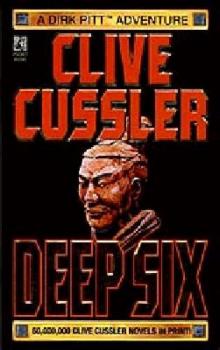 Deep Six
Deep Six Odessa Sea
Odessa Sea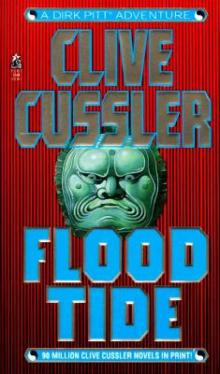 Flood Tide
Flood Tide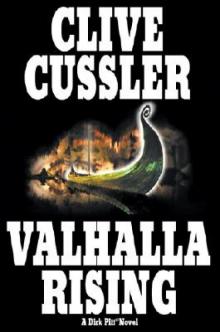 Valhalla Rising
Valhalla Rising Thriller 2
Thriller 2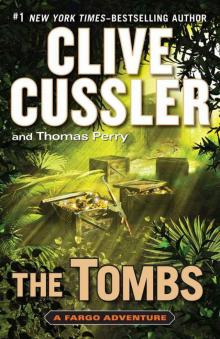 The Tombs
The Tombs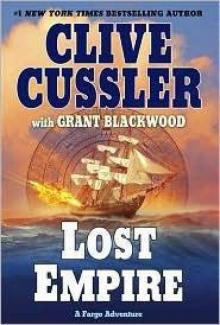 Lost Empire
Lost Empire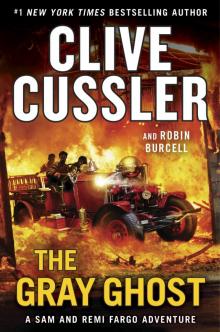 The Gray Ghost
The Gray Ghost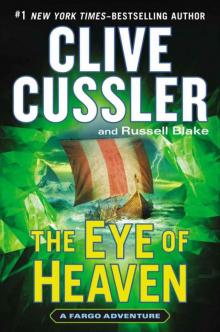 The Eye of Heaven
The Eye of Heaven Polar Shift
Polar Shift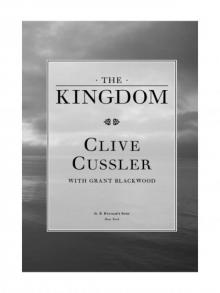 The Kingdom
The Kingdom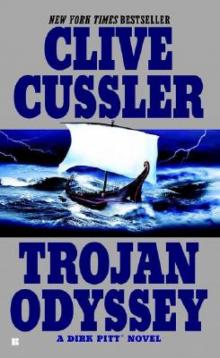 Trojan Odyssey
Trojan Odyssey Shadow Tyrants
Shadow Tyrants Nighthawk
Nighthawk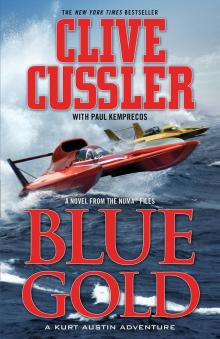 Blue Gold
Blue Gold Serpent
Serpent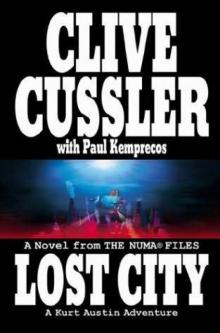 Lost City
Lost City The Gangster
The Gangster White Death
White Death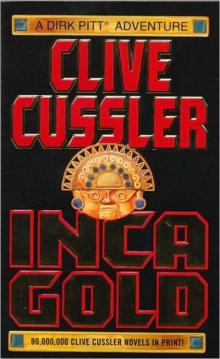 Inca Gold
Inca Gold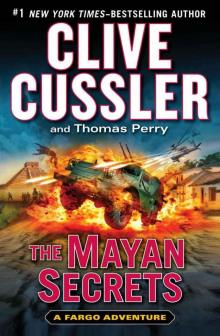 The Mayan Secrets
The Mayan Secrets The Pharaoh's Secret
The Pharaoh's Secret The Emperor's Revenge
The Emperor's Revenge Corsair
Corsair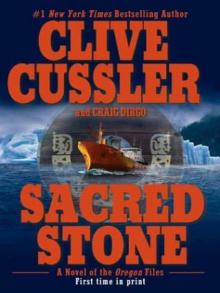 Sacred Stone
Sacred Stone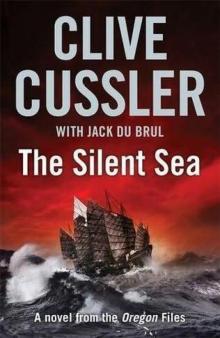 The Silent Sea
The Silent Sea The Rising Sea
The Rising Sea Black Wind
Black Wind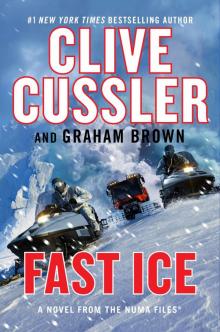 Fast Ice
Fast Ice Ghost Ship
Ghost Ship Marauder
Marauder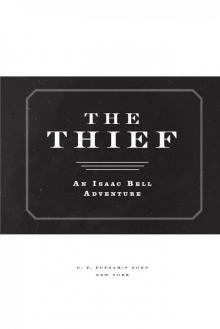 The Thief
The Thief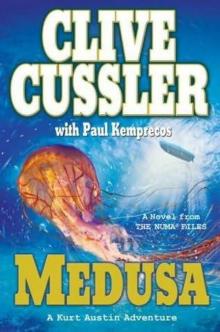 Medusa
Medusa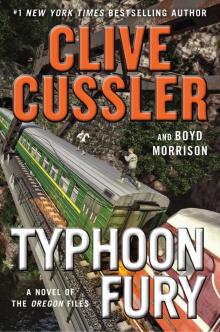 Typhoon Fury
Typhoon Fury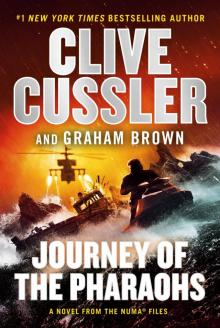 Journey of the Pharaohs
Journey of the Pharaohs The Navigator
The Navigator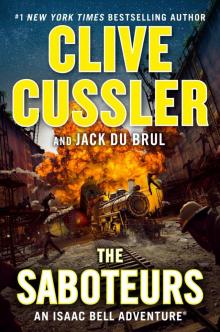 The Saboteurs
The Saboteurs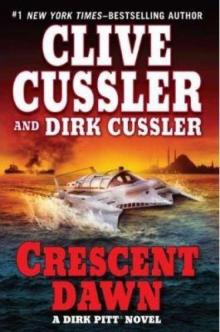 Crescent Dawn
Crescent Dawn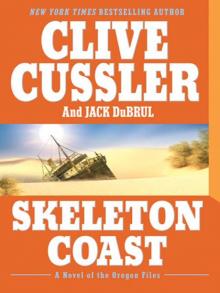 Skeleton Coast
Skeleton Coast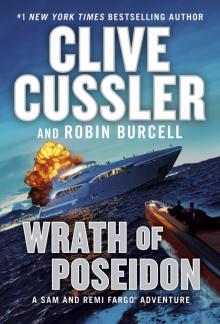 Wrath of Poseidon
Wrath of Poseidon The Mediterranean Caper
The Mediterranean Caper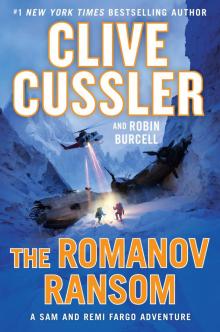 The Romanov Ransom
The Romanov Ransom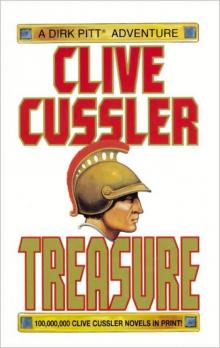 Treasure
Treasure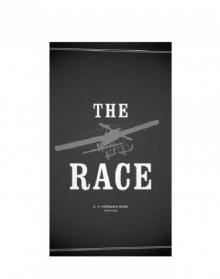 The Race
The Race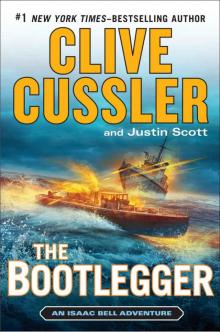 The Bootlegger
The Bootlegger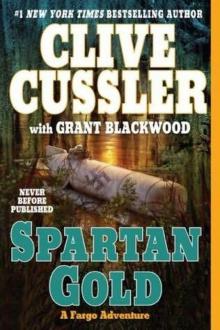 Spartan Gold
Spartan Gold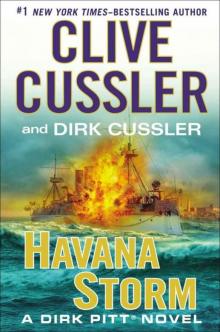 Havana Storm
Havana Storm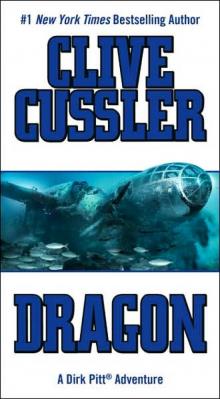 Dragon
Dragon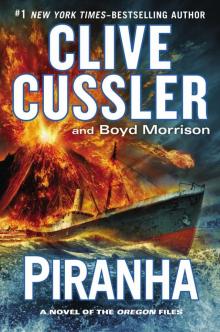 Piranha
Piranha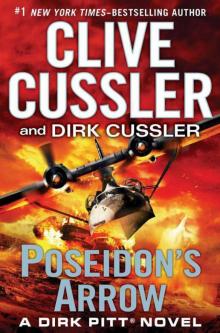 Poseidon's Arrow
Poseidon's Arrow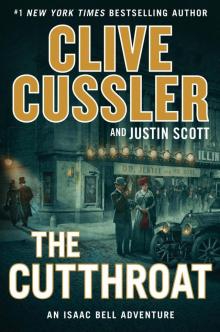 The Cutthroat
The Cutthroat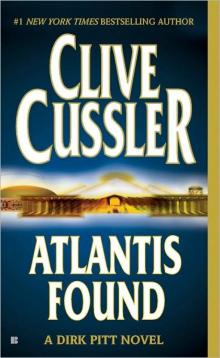 Atlantis Found
Atlantis Found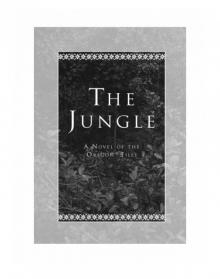 The Jungle
The Jungle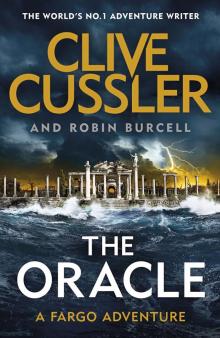 The Oracle
The Oracle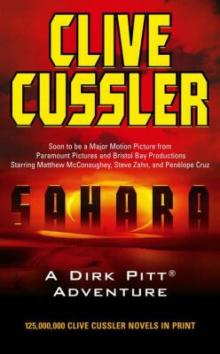 Treasure / Dragon / Sahara: Clive Cussler Gift Set
Treasure / Dragon / Sahara: Clive Cussler Gift Set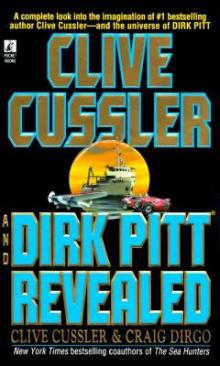 Clive Cussler and Dirk Pitt Revealed
Clive Cussler and Dirk Pitt Revealed The Sea Hunters
The Sea Hunters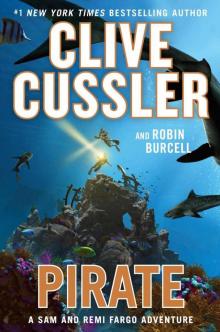 Pirate
Pirate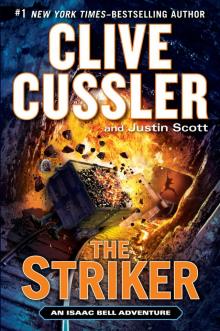 The Striker
The Striker Plague Ship
Plague Ship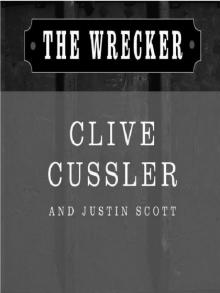 The Wrecker
The Wrecker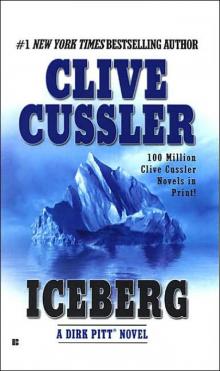 Iceberg
Iceberg The Chase
The Chase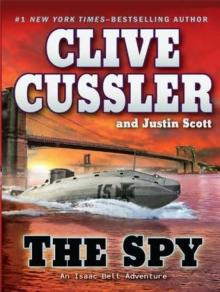 The Spy
The Spy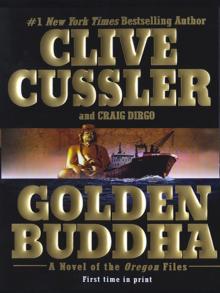 Golden Buddha
Golden Buddha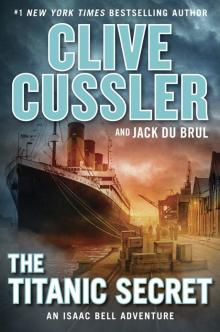 The Titanic Secret
The Titanic Secret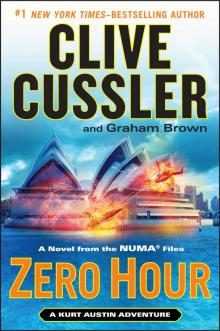 Zero Hour
Zero Hour Fire Ice
Fire Ice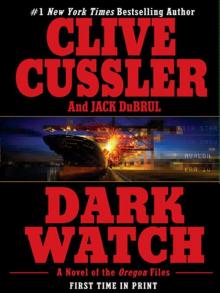 Dark Watch
Dark Watch The Storm
The Storm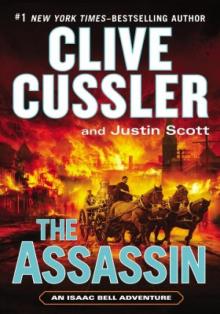 The Assassin
The Assassin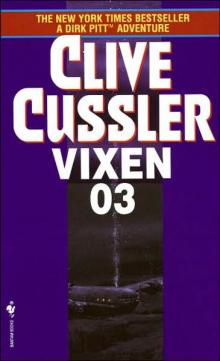 Vixen 03
Vixen 03 Arctic Drift
Arctic Drift Night Probe!
Night Probe! Cyclops
Cyclops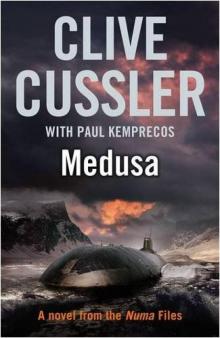 Medusa nf-8
Medusa nf-8 Shock Wave dp-13
Shock Wave dp-13 Marauder (The Oregon Files)
Marauder (The Oregon Files)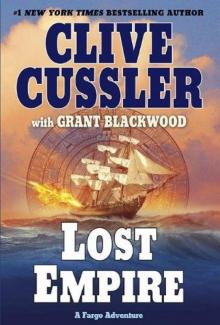 Lost Empire fa-2
Lost Empire fa-2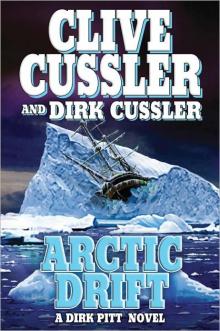 Arctic Drift dp-20
Arctic Drift dp-20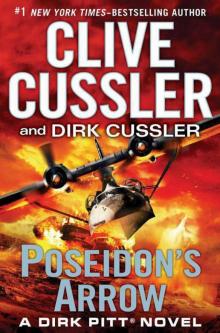 Dirk Pitt 22 - Poseidon's Arrow
Dirk Pitt 22 - Poseidon's Arrow Treasure of Khan dp-19
Treasure of Khan dp-19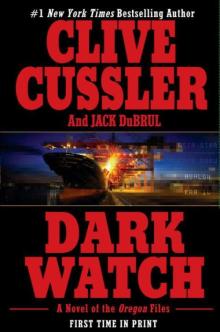 Dark Watch of-3
Dark Watch of-3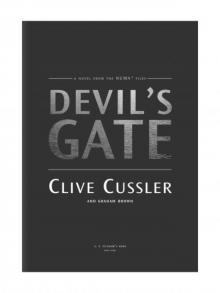 Devil's Gate
Devil's Gate The Sea Hunters II: More True Adventures with Famous Shipwrecks
The Sea Hunters II: More True Adventures with Famous Shipwrecks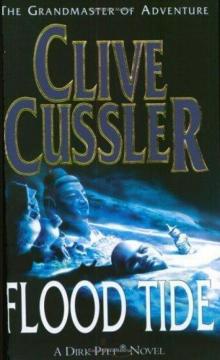 Flood Tide dp-14
Flood Tide dp-14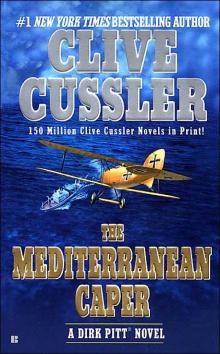 The Mediterranean Caper dp-2
The Mediterranean Caper dp-2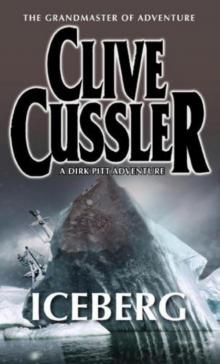 Iceberg dp-3
Iceberg dp-3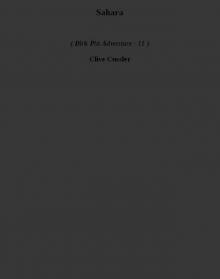 Sahara dpa-11
Sahara dpa-11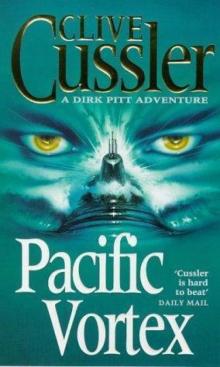 Pacific Vortex! dp-1
Pacific Vortex! dp-1 Deep Six dp-7
Deep Six dp-7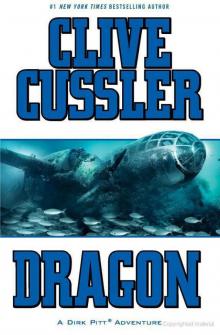 Dragon dp-10
Dragon dp-10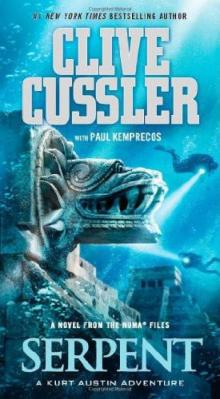 Serpent nf-1
Serpent nf-1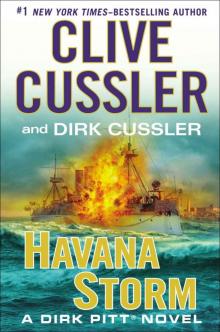 Havana Storm (Dirk Pitt Adventure)
Havana Storm (Dirk Pitt Adventure)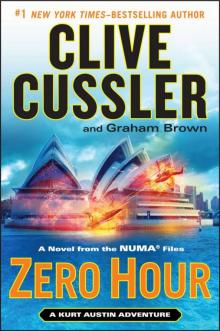 Zero Hour nf-11
Zero Hour nf-11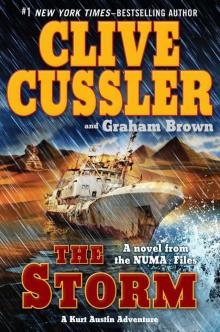 The Storm nf-10
The Storm nf-10 The Thief ib-5
The Thief ib-5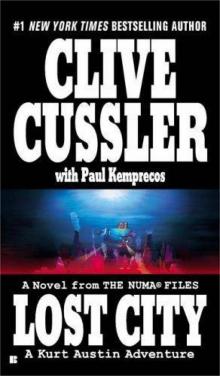 Lost City nf-5
Lost City nf-5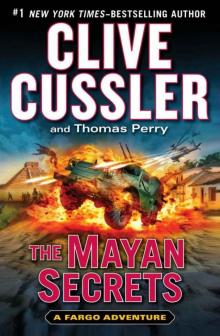 The Mayan Secrets fa-5
The Mayan Secrets fa-5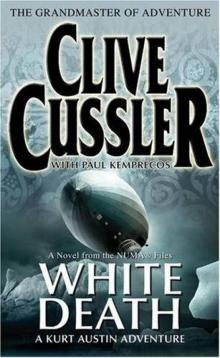 White Death nf-4
White Death nf-4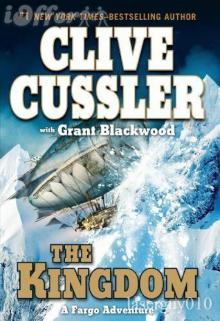 The Kingdom fa-3
The Kingdom fa-3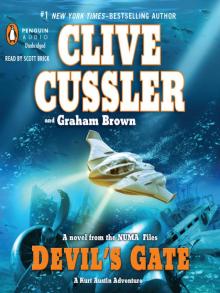 Devil's Gate nf-9
Devil's Gate nf-9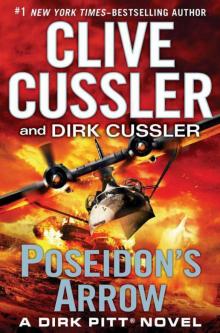 Poseidon's Arrow dp-22
Poseidon's Arrow dp-22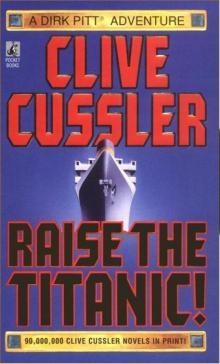 Raise the Titanic dp-4
Raise the Titanic dp-4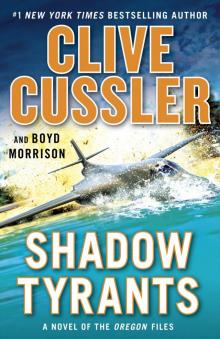 Shadow Tyrants--Clive Cussler
Shadow Tyrants--Clive Cussler Sacred Stone of-2
Sacred Stone of-2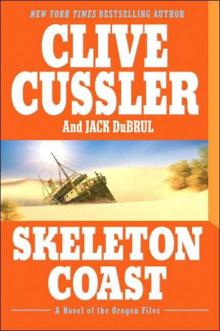 Skeleton Coast tof-4
Skeleton Coast tof-4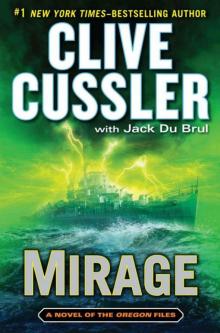 Mirage tof-9
Mirage tof-9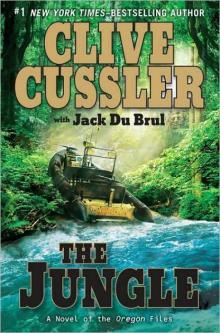 The Jungle of-8
The Jungle of-8 The Emperor's Revenge (The Oregon Files)
The Emperor's Revenge (The Oregon Files)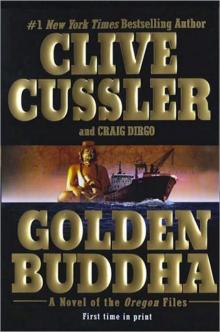 Golden Buddha of-1
Golden Buddha of-1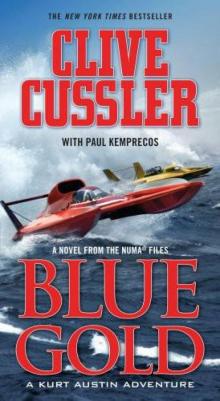 Blue & Gold
Blue & Gold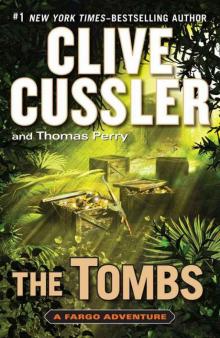 The Tombs fa-4
The Tombs fa-4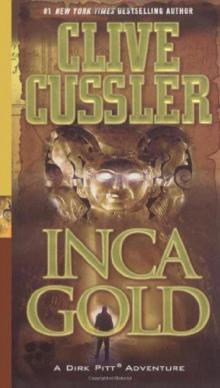 Inca Gold dp-12
Inca Gold dp-12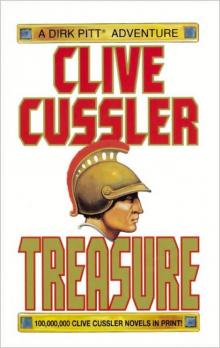 Treasure dp-9
Treasure dp-9 Atlantis Found dp-15
Atlantis Found dp-15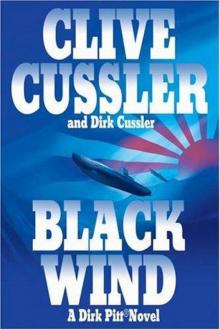 Black Wind dp-18
Black Wind dp-18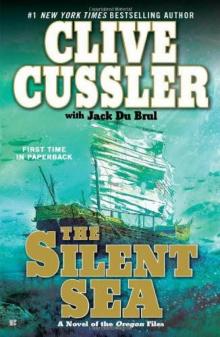 the Silent Sea (2010) tof-7
the Silent Sea (2010) tof-7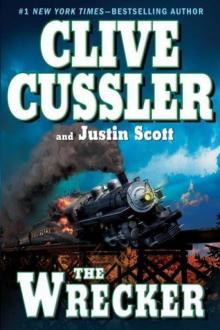 The Wrecker ib-2
The Wrecker ib-2 Fire Ice nf-3
Fire Ice nf-3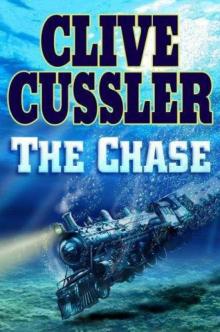 The Chase ib-1
The Chase ib-1 Sahara
Sahara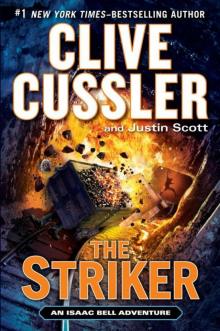 The Striker ib-6
The Striker ib-6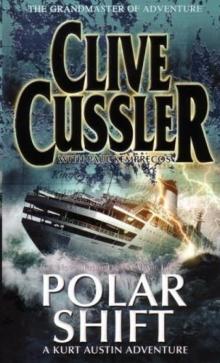 Polar Shift nf-6
Polar Shift nf-6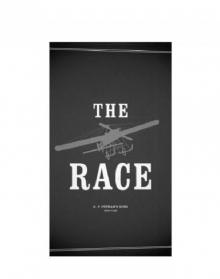 The Race ib-4
The Race ib-4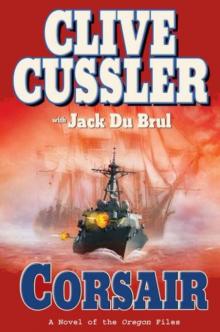 Corsair of-6
Corsair of-6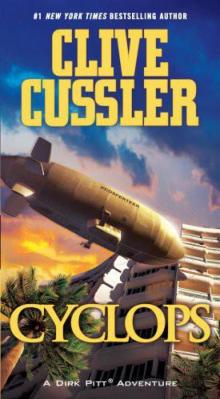 Cyclops dp-8
Cyclops dp-8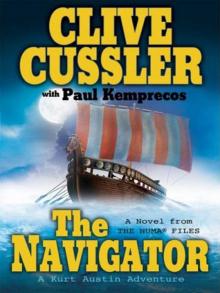 The Navigator nf-7
The Navigator nf-7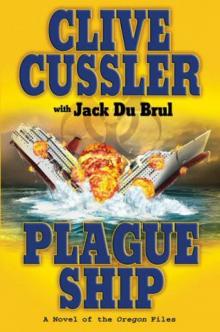 Plague Ship tof-5
Plague Ship tof-5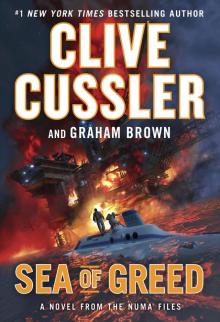 Sea of Greed
Sea of Greed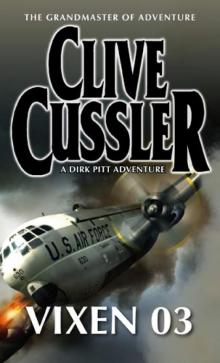 Vixen 03 dp-5
Vixen 03 dp-5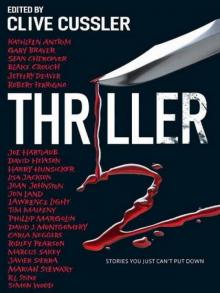 Thriller 2: Stories You Just Can't Put Down
Thriller 2: Stories You Just Can't Put Down